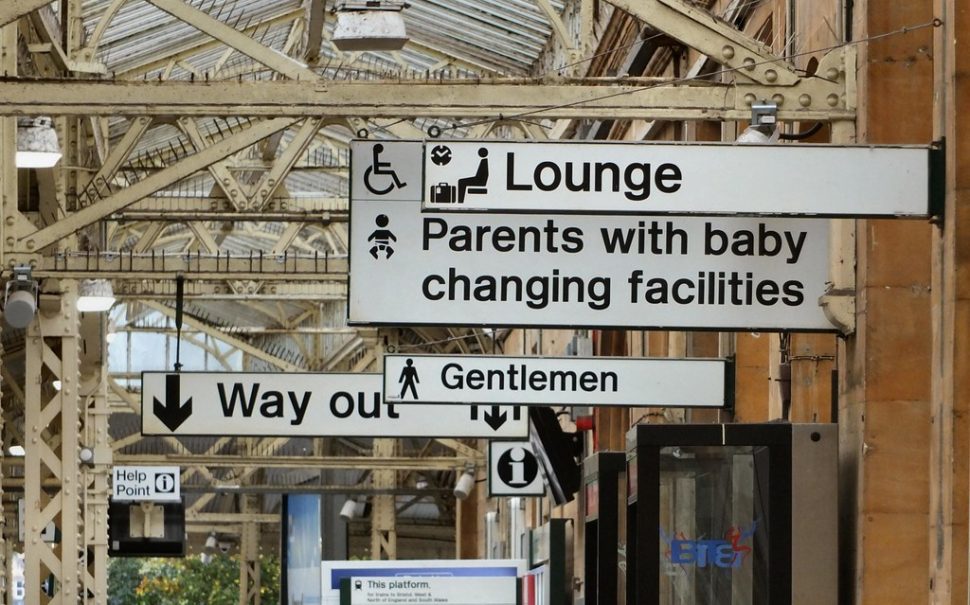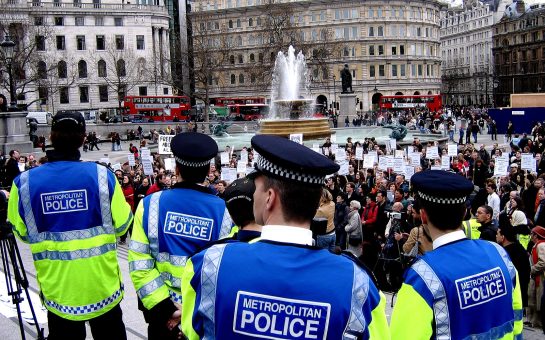The need for baby-changing facilities is an issue that is not widely spoken about but is an issue for many parents.
However one half is often overlooked, the fathers.
In the past five years, there has been a steady rise in the number of single fathers from 914 to 1,093 according to the Office for National Statistics.
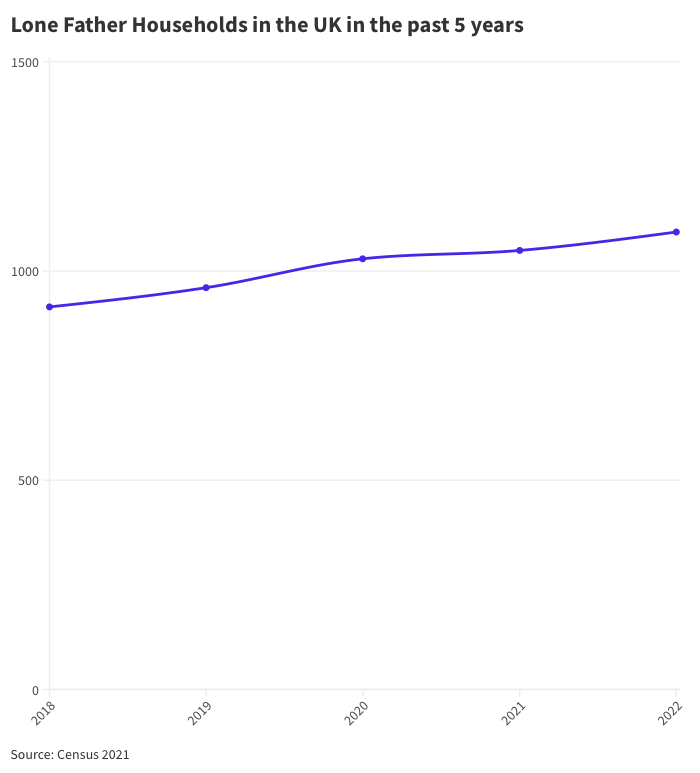
Single fathers make up around 2% of all types of households including married couples with and without kids, single occupants and so on.
While 2% doesn’t sound like a great deal mathematically the percentage doesn’t fully capture the broader male population including two-father families, fathers in married or cohabiting households, grandfathers, and brothers, all of which contribute to the growing demand for accessible baby changing facilities.
Dear Persons Running Public Buildings,
— Ian Brownhill (@CounselTweets) February 10, 2022
Do not place baby changing facilities only in the ladies’ toilets.
Yours sincerely,
Dads who change nappies xxx
An interactive map called the GB Toilet Map aims to provide information about the locations of all the public toilets in the UK and their facilities such as the number of male toilets and if they contain baby changing facilities.
The map also encourages people to go on and update their findings onto it.
Gail Ramster a representative for GB Toilet Map, said: “There was a problem with baby changing facilities being included sometimes in the women’s toilets and not men’s, I’ve heard that mentioned more and more over the last ten years.
“People are becoming more conscious of it.
“In our first study, I remember there was a father who did find that baby changing was the biggest challenge because he’d find that for a baby, he didn’t necessarily need that level of privacy and if you had a baby mat you could go anywhere.
“It becomes more difficult when children are toilet trained later like two- and three-year-olds that need changing and who would not be as comfortable being changed in public and also parents shouldn’t need to choose to make that decision.”
Ramster also addressed that some disabled public toilets have baby changing facilities inside disabled cubicles which offer accessibility for disabled parents, however, simultaneously creates more demand for the single cubicle, potentially causing delays for those in urgent need.
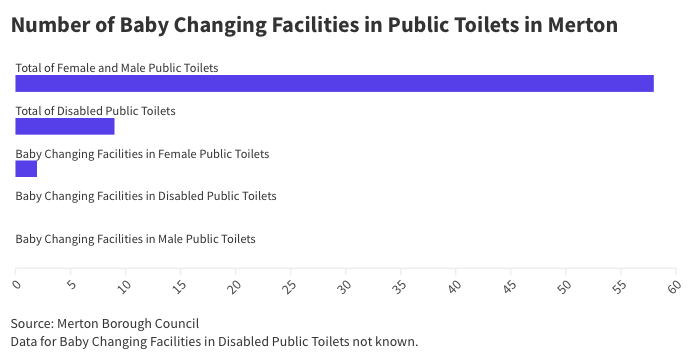
Data from Merton shows that there are no baby changing facilities in male public toilets and only two in female spaces in the whole borough although there is nine in disabled toilets.
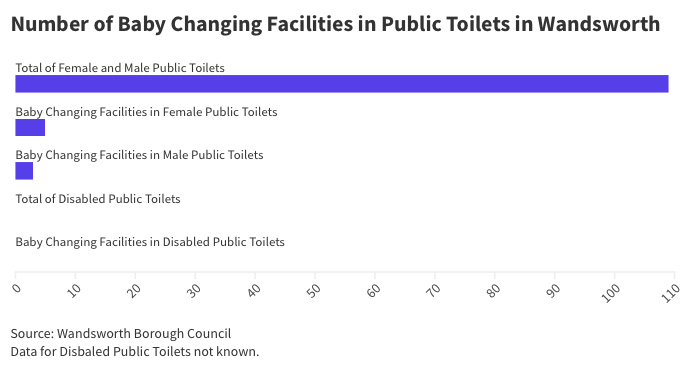
Wandsworth on the other hand, have 21 baby changing facilities in female toilets with three in male spaces.
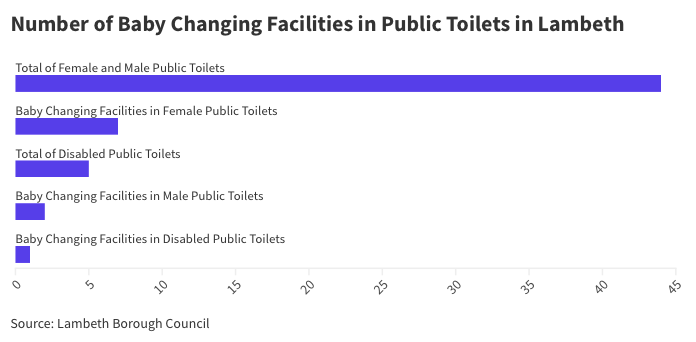
Lambeth has a total of seven baby changing facilities in female toilets, two in male spaces and one in a disabled space.
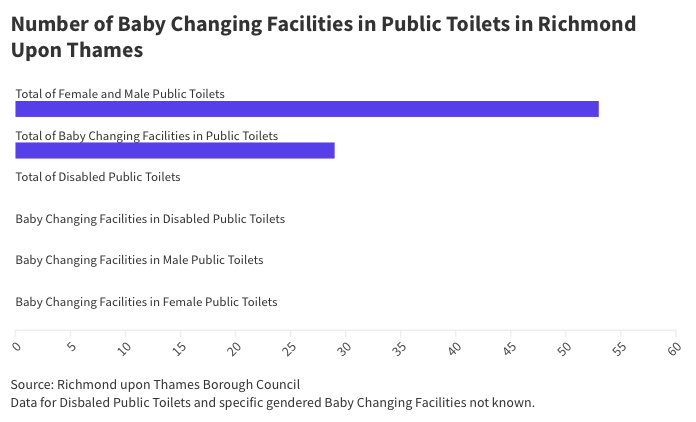
Richmond upon Thames Borough Council could not specify the exact number of baby changing facilities in either the male or female public toilets.
The lack of precise information shows an oversight in ensuring equal facilities for all genders which highlights questions about councils’ commitment to inclusivity and accessibility for all individuals, regardless of gender when it comes to baby changing facilities.
The data combined may illustrate the enforcement of traditional gender roles with parental responsibilities falling mostly onto the mothers due to men having very few options available to change their baby.
However, it can also create frustration for fathers who want or have to actively participate in caregiving.
Hi @thedeephull, my sister in law is currently changing my son's nappy instead of my husband because apparently the only baby change facilities are in the women's? What century is this again?
— Kate Leader (@leader_kate) October 27, 2021
Most shockingly, Merton have a male population of over 100,000 and a female population of only around 6,000 more, according to a Census survey in 2021 yet have zero baby changing facilities for these men to use.
That being said, Merton are set to lose all their public toilets by 2046, Wandsworth by 2052 and Lambeth 2074 as projected by Victorian Plumbing.
Brenna Ryan at Victorian Plumbing said: “It may seem like a trivial thing to worry about, but the dwindling number of public toilets speaks to a broader issue of societal neglect.”
This links to the lack of baby changing facilities in male public toilets as the issue seems like it will get worse before and if it does get better due to the larger trend of essential amenities becoming more and more limited.
Although much of the data form the London Borough of Richmond Upon Thames came back as unknown, the council do promote a Community Toilet Scheme.
The scheme gets businesses to offer clean, safe, and accessible toilets to the public which should have signage and an interactive map that indicates the available facilities such as disabled access and baby changing.
As the role of fathers in caregiving continues to evolve, it becomes increasingly important to assess and address the accessibility of these facilities in public spaces, ensuring that all parents, regardless of gender or family structure, have equal and convenient access to the facilities they need.
A supposed solution to the issue at hand as suggested by Ramster and multiple X users is to create gender neutral public toilet spaces for everyone to use which include adequate baby changing facilities.
Featured image credit: Gerard Stock under CC BY-NC 2.0 DEED.
